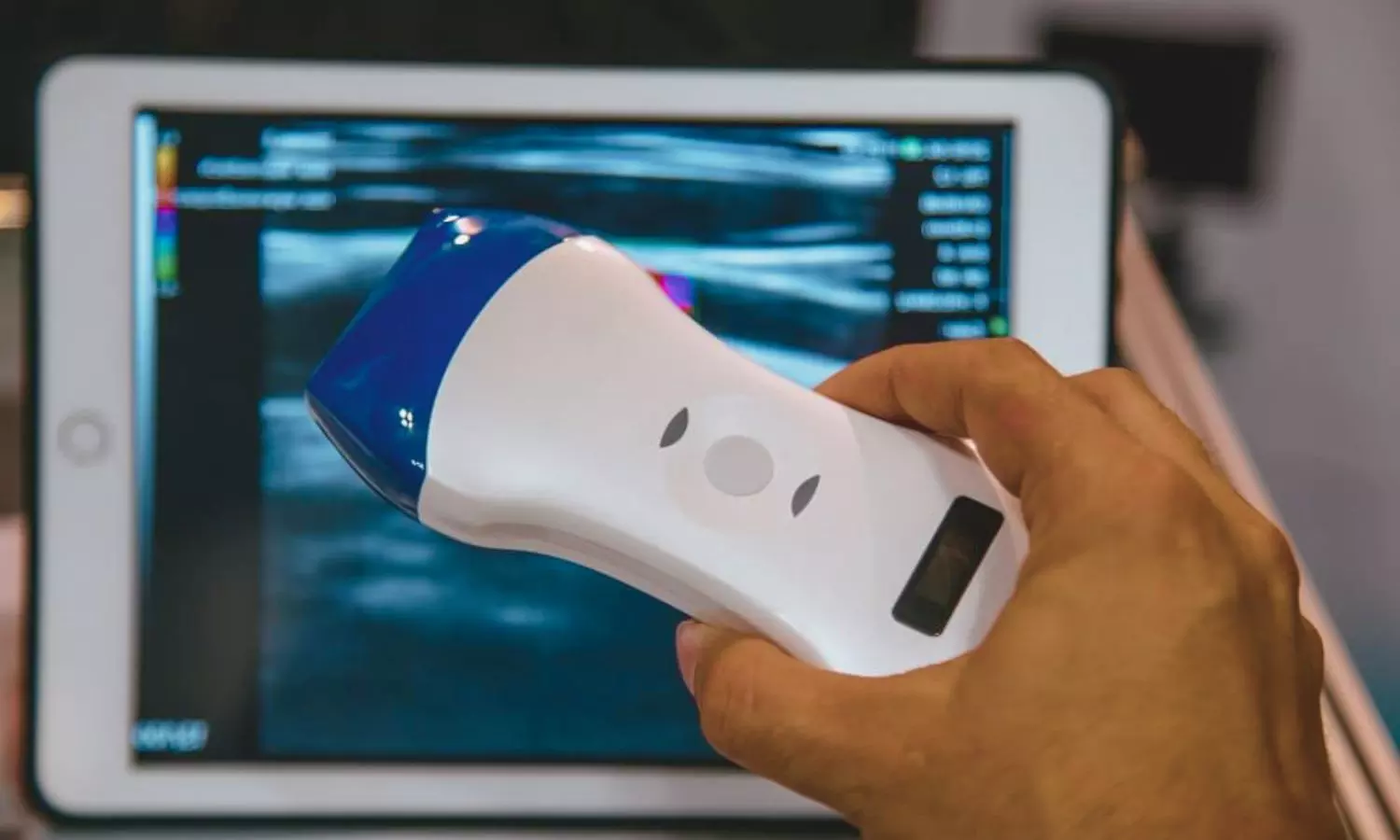New Review Calls for 3-Lead ECG Integration in Portable Cardiac Ultrasound Devices
- byDoctor News Daily Team
- 24 September, 2025
- 0 Comments
- 0 Mins

UK: Portable handheld cardiac ultrasound devices have rapidly become essential tools in emergency rooms, outpatient clinics, and even remote healthcare settings. Their ability to deliver real-time cardiac imaging at the patient’s bedside has transformed point-of-care diagnosis and treatment. Yet a key feature remains absent in most models: a built-in 3-lead electrocardiograph (ECG). A recent mini-narrative review inApollo Medicinehighlights why adding this function is critical for improving diagnostic precision and patient outcomes. The review explored evidence from multiple studies examining the value of pairing a 3-lead ECG with handheld echocardiography. Transthoracic echocardiography provides detailed structural and functional information about the heart, while an ECG records the heart’s electrical activity and rhythm. When used together, they allow clinicians to time image acquisition precisely within the cardiac cycle—something that standalone handheld scanners cannot currently achieve. The review also emphasised that synchronising cardiac imaging with electrical activity—capturing frames at end-diastole or end-systole—improves measurement of chamber dimensions, ventricular function, and haemodynamics. Such precision can be lifesaving during emergencies like cardiac tamponade or acute heart failure, where seconds matter. Author Chidiebere Emmanuel Okechukwu, from the Cardiology Department of University Hospitals Plymouth NHS Trust, reinforces this message:“Integrating a 3-lead ECG with portable handheld echocardiographs enables real-time synchronisation of electrical and imaging data, enhancing diagnostic accuracy in point-of-care cardiac evaluations by precisely timing measurements—like QRS for end-diastole and T-wave for end-systole—while detecting arrhythmias and guiding assessments of ventricular function and diastolic dynamics.” Beyond emergency departments, the potential impact is wide-ranging. Family physicians and general practitioners could employ these dual-function devices for routine check-ups, early detection of heart disease, and ongoing management of chronic conditions. The combination of structural and electrical insights would give clinicians a more complete picture of cardiac health without requiring multiple separate tests. The review concludes with a call to action for medical device manufacturers: future handheld echocardiographs should incorporate 3-lead ECGs and leverage artificial intelligence to assist in real-time analysis. Such innovations would not only enhance diagnostic accuracy but also democratise advanced cardiac care, making it accessible in rural clinics, disaster zones, and low-resource settings. "As cardiovascular diseases continue to rise globally, the integration of ECG into handheld cardiac ultrasound devices is more than a technological upgrade—it is an urgent step toward faster, more accurate, and more equitable heart care," Dr. Emmanuel Okechukwu wrote. About the study author Dr Emmanuel Okechukwu, PhD, FRSPH, is a multidisciplinary expert in clinical echocardiography, cardiovascular physiology, cardiac rehabilitation, public health, and cancer recovery. His training in transthoracic echocardiography enables precise cardiac diagnostics, while his foundation in cardiac physiology informs his approach to heart health. He has led research on exercise-based cardiac rehabilitation, particularly in patients with chronic heart conditions. In Canada, he contributed to cancer rehabilitation through the ACE and EXCEL programs, promoting physical and mental recovery in survivors. Presently works at the cardiology department, University Hospitals Plymouth NHS Trust. Okechukwu CE. Why Portable Handheld Cardiac Ultrasound Devices Ought to Incorporate 3-lead Electrocardiographs: A Mini-narrative Review. Apollo Medicine. 2024;22(5):427-431.doi:10.1177/09760016241301135
Disclaimer: This website is designed for healthcare professionals and serves solely for informational purposes.
The content provided should not be interpreted as medical advice, diagnosis, treatment recommendations, prescriptions, or endorsements of specific medical practices. It is not a replacement for professional medical consultation or the expertise of a licensed healthcare provider.
Given the ever-evolving nature of medical science, we strive to keep our information accurate and up to date. However, we do not guarantee the completeness or accuracy of the content.
If you come across any inconsistencies, please reach out to us at
admin@doctornewsdaily.com.
We do not support or endorse medical opinions, treatments, or recommendations that contradict the advice of qualified healthcare professionals.
By using this website, you agree to our
Terms of Use,
Privacy Policy, and
Advertisement Policy.
For further details, please review our
Full Disclaimer.
Recent News
Mumbai's GT Hospital doctor injured after ceiling...
- 20 October, 2025
Rajasthan HC Quashes Ban on New B.Pharm Colleges,...
- 20 October, 2025
Dr. Reddy's Labs Gets CDSCO Panel Nod to Manufactu...
- 20 October, 2025
Daily Newsletter
Get all the top stories from Blogs to keep track.


0 Comments
Post a comment
No comments yet. Be the first to comment!